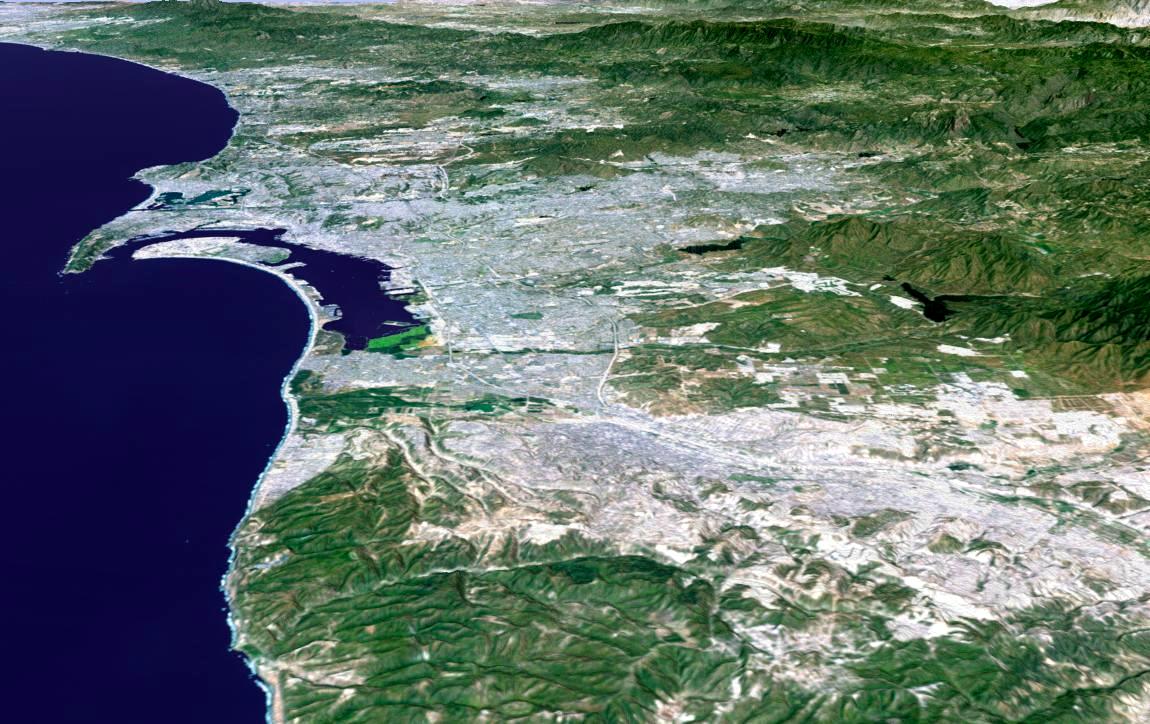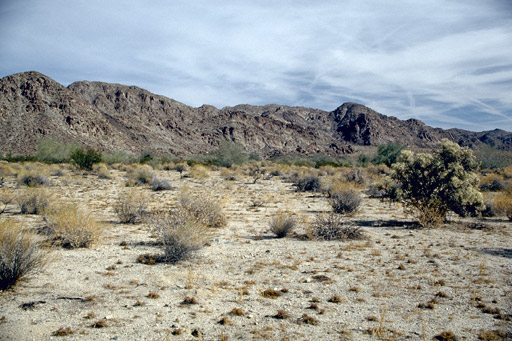|
Cuyamaca Complex
The Cuyamaca complex is a precolumbian complex, dating from the late Holocene, with archaeological sites in San Diego County, California. This complex is related to the Kumeyaay peoples."A Glossary of Proper Names in California Prehistory." ''Society for California Archaeology.'' (retrieved 12 Aug 2011) This archaeological pattern was defined by Delbert L. True in the 1960s, on the basis of late prehistoric evidence from the territory of the people, primarily in |
Precolumbian
In the history of the Americas, the pre-Columbian era spans from the Migration to the New World, original settlement of North and South America in the Upper Paleolithic period through European colonization of the Americas, European colonization, which began with Christopher Columbus's voyage of 1492. Usually, the era covers the history of Indigenous peoples of the Americas, Indigenous cultures until significant influence by Europeans. This may have occurred decades or even centuries after Columbus for certain cultures. Many pre-Columbian civilizations were marked by permanent settlements, cities, agriculture, civic and monumental architecture, major earthworks (archaeology), earthworks, and Complex society, complex societal hierarchies. Some of these civilizations had long faded by the time of the first permanent European colonies (c. late 16th–early 17th centuries), and are known only through archaeology of the Americas, archaeological investigations and oral history. Other civi ... [...More Info...] [...Related Items...] OR: [Wikipedia] [Google] [Baidu] |
Holocene
The Holocene ( ) is the current geological epoch. It began approximately 11,650 cal years Before Present (), after the Last Glacial Period, which concluded with the Holocene glacial retreat. The Holocene and the preceding Pleistocene together form the Quaternary period. The Holocene has been identified with the current warm period, known as MIS 1. It is considered by some to be an interglacial period within the Pleistocene Epoch, called the Flandrian interglacial.Oxford University Press – Why Geography Matters: More Than Ever (book) – "Holocene Humanity" section https://books.google.com/books?id=7P0_sWIcBNsC The Holocene corresponds with the rapid proliferation, growth and impacts of the human species worldwide, including all of its written history, technological revolutions, development of major civilizations, and overall significant transition towards urban living in the present. The human impact on modern-era Earth and its ecosystems may be considered of global si ... [...More Info...] [...Related Items...] OR: [Wikipedia] [Google] [Baidu] |
San Diego County, California
San Diego County (), officially the County of San Diego, is a county in the southwestern corner of the U.S. state of California. As of the 2020 census, the population was 3,298,634, making it California's second-most populous county and the fifth-most populous in the United States. Its county seat is San Diego, the second-most populous city in California and the eighth-most populous city in the United States. It is the southwesternmost county in the 48 contiguous United States, and is a border county. It is also home to 18 Native American tribal reservations, the most of any county in the United States. San Diego County comprises the San Diego-Chula Vista-Carlsbad, CA Metropolitan Statistical Area, which is the 17th most populous metropolitan statistical area and the 18th most populous primary statistical area of the United States as of July 1, 2012. San Diego County is also part of the San Diego–Tijuana transborder metropolitan area, the largest metropolitan area shar ... [...More Info...] [...Related Items...] OR: [Wikipedia] [Google] [Baidu] |
Kumeyaay People
The Kumeyaay, also known as Tipai-Ipai or by their historical Spanish name Diegueño, is a tribe of Indigenous peoples of the Americas who live at the northern border of Baja California in Mexico and the southern border of California in the United States. Their Kumeyaay language belongs to the Yuman–Cochimí language family. The Kumeyaay consist of three related groups, the Ipai, Tipai and Kamia. The San Diego River loosely divided the Ipai and the Tipai historical homelands, while the Kamia lived in the eastern desert areas. The Ipai lived to the north, from Escondido to Lake Henshaw, while the Tipai lived to the south, in lands including the Laguna Mountains, Ensenada, and Tecate. The Kamia lived to the east in an area that included Mexicali and bordered the Salton Sea. Name The Kumeyaay or Tipai-Ipai were formerly known as the Kamia or Diegueños, the former Spanish name applied to the Mission Indians living along the San Diego River. They are referred to as the Kumia ... [...More Info...] [...Related Items...] OR: [Wikipedia] [Google] [Baidu] |
Delbert Leroy True
D. L. True (August 31, 1923 – June 20, 2001) was an archaeologist who worked in California, particularly San Diego County, and in northern Chile. Born in San Pedro, California, son of a lumberyard foreman, True worked in a shipyard and served as an aerial-gunnery instructor for the U.S. Army Air Corps during World War II. After the war he established a small avocado ranch in Pauma Valley, an inland area in northern San Diego County, also working as a school bus driver. True became interested in and thoroughly familiar with the archaeological remains of the Pauma region's prehistoric cultures. Under the mentorship of Clement W. Meighan, he enrolled in anthropology at the University of California, Los Angeles, where he was cited by ''Time'' magazine as one of the dozen top graduates in 1961. He went on to receive his doctorate from UCLA in 1966, with a dissertation entitled "Archaeological Differentiation of Shoshonean and Yuman Speaking Groups in Southern California". He serve ... [...More Info...] [...Related Items...] OR: [Wikipedia] [Google] [Baidu] |
Kumeyaay
The Kumeyaay, also known as Tipai-Ipai or by their historical Spanish name Diegueño, is a tribe of Indigenous peoples of the Americas who live at the northern border of Baja California in Mexico and the southern border of California in the United States. Their Kumeyaay language belongs to the Yuman–Cochimí language family. The Kumeyaay consist of three related groups, the Ipai, Tipai and Kamia. The San Diego River loosely divided the Ipai and the Tipai historical homelands, while the Kamia lived in the eastern desert areas. The Ipai lived to the north, from Escondido to Lake Henshaw, while the Tipai lived to the south, in lands including the Laguna Mountains, Ensenada, and Tecate. The Kamia lived to the east in an area that included Mexicali and bordered the Salton Sea. Name The Kumeyaay or Tipai-Ipai were formerly known as the Kamia or Diegueños, the former Spanish name applied to the Mission Indians living along the San Diego River. They are referred to as the Kumiai ... [...More Info...] [...Related Items...] OR: [Wikipedia] [Google] [Baidu] |
Cuyamaca Rancho State Park
Cuyamaca Rancho State Park is a state park in Southern California, United States, located east of San Diego in the Cuyamaca and Laguna Mountains of the Peninsular Ranges. The park's feature pine, fir, and oak forests, with meadows and streams that exist due to the relatively high elevation of the area compared to its surroundings. The park includes Cuyamaca Peak, the second-highest point in San Diego County. Park amenities include trails for hiking, horseback riding, and mountain biking, as well as campgrounds for family, group, equestrian, and primitive trail camping; and an exhibit at a former gold mine, the Stonewall Mine. Wildlife in the area includes mountain lions, which have been known to attack humans, and park literature emphasizes avoiding encounters with them. Numerous other species of mammals, birds, reptiles, and amphibians are known to reside within the park. The park was closed for several months due to massive damage incurred in the 2003 Cedar Fire. Although ... [...More Info...] [...Related Items...] OR: [Wikipedia] [Google] [Baidu] |
Malcolm Jennings Rogers
''This article refers to the archaeologist. For others with the name Malcolm Rogers, please see Malcolm Rogers (other).'' Malcolm Jennings Rogers (1890–1960) was a pioneering archaeologist in southern California, Baja California, and Arizona. Born in Fulton, New York, Rogers studied mining geology at Syracuse University and initially worked as a mining geologist. After service in the U.S. Marine Corps during World War I, he moved to Escondido, California in 1919 and took up citrus farming. However, he was soon involved with local archaeology and associated with the San Diego Museum of Man. He moved to San Diego San Diego ( , ; ) is a city on the Pacific Ocean coast of Southern California located immediately adjacent to the Mexico–United States border. With a 2020 population of 1,386,932, it is the eighth most populous city in the United State ... and became a full-time Curator at the museum in 1930, continuing at that post until his resignation in 1945 ... [...More Info...] [...Related Items...] OR: [Wikipedia] [Google] [Baidu] |
Patayan
Patayan is a group of prehistoric and historic Native American cultures in parts of modern-day Arizona, west to Lake Cahuilla in California, and in Baja California, from AD 700 to 1550. This included areas along the Gila River, Colorado River and in the Lower Colorado River Valley, the nearby uplands, and north to the vicinity of the Grand Canyon. Cultural neighbors Patayan culture is sometimes known as the Hakataya culture. Their nearest cultural neighbors were the Hohokam in central and eastern Arizona. The historic Yuman-speaking peoples in this region were skilled warriors and active traders, maintaining exchange networks with the Pima in southern Arizona and with the Californian Pacific Coast tribes. Archaeology The name "Patayan" comes from the Quechan language and means "old people". Alternative terms have been proposed for the culture group. The archaeological record of the Patayan is poorly understood. Archaeologist Malcolm Rogers first identified the Patayan, publ ... [...More Info...] [...Related Items...] OR: [Wikipedia] [Google] [Baidu] |
Colorado Desert
California's Colorado Desert is a part of the larger Sonoran Desert. It encompasses approximately , including the heavily irrigated Coachella and Imperial valleys. It is home to many unique flora and fauna. Geography and geology The Colorado Desert is a subdivision of the larger Sonoran Desert encompassing approximately . The desert encompasses Imperial County and includes parts of San Diego County, Riverside County, and a small part of San Bernardino County, California, United States. Most of the Colorado Desert lies at a relatively low elevation, below , with the lowest point of the desert floor at below sea level, at the Salton Sea. Although the highest peaks of the Peninsular Ranges reach elevations of nearly , most of the region's mountains do not exceed . In this region, the geology is dominated by the transition of the tectonic plate boundary from rift to fault. The southernmost strands of the San Andreas Fault connect to the northernmost extensions of the East Pacif ... [...More Info...] [...Related Items...] OR: [Wikipedia] [Google] [Baidu] |






